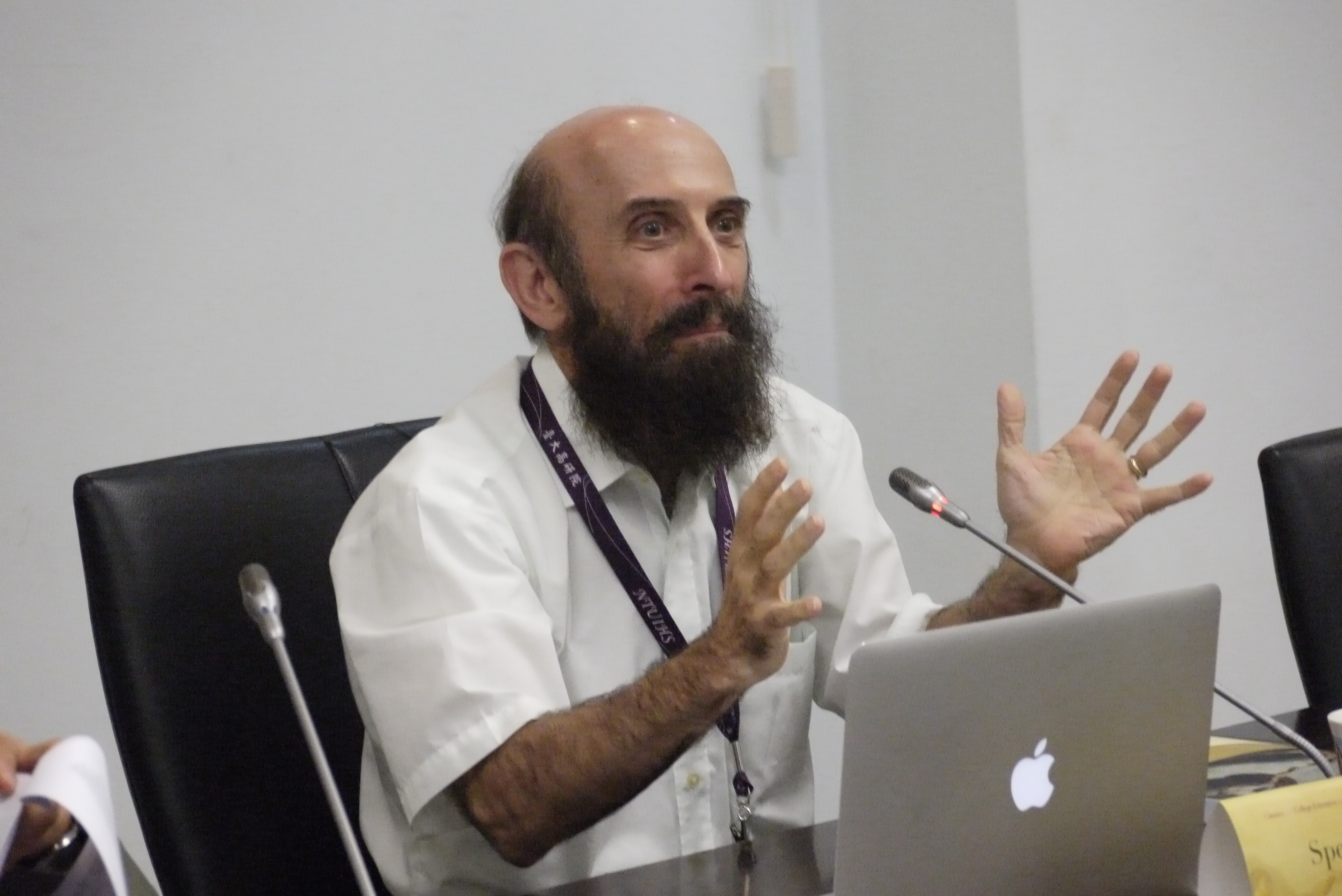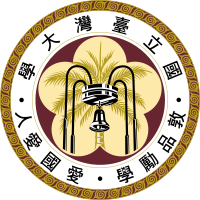【宏觀視野】Back to the Future?

Carl B. Becker, Ph.D.,
D. Litt., Kyoto University
Japanese Wisdom.
The great culture gaps in Japan or China and America today are not so much differences between Tokyo or Taipei and New York, as internal differences between rich and poor, urban and rural, youth and elders. In each of these countries, centuries-old life-styles and death rituals are rapidly giving place to lives devoid of ritual meaning and styled only after media images. Years ago, American media had taught me to believe subconsciously that typing rapidly was superior to handwriting slowly, that a "Big Gulp" (liter of liquid) was more satisfying than a sip of tea, and that half naked teenage Miss Universes strolling the beach were more beautiful than octogenarians.
My first few weeks living in a temple in Japan transformed that worldview. I witnessed an 88-year old calligrapher brush a scroll which combined art and wisdom in a way no typing could. I sat on my heels for hours in a tea room to receive a sip of tea more deeply memorable and satisfying than any liter of Cola. I watched the slender hands and ageless face of an octogenarian classical dancer perform with more grace and beauty than any Miss Universe.
As media's blinders fell from my eyes, I gained hope for humanity. If speed, size, and youth were all that mattered, then all adult humanity must forever remain wretchedly longing to be swifter or bigger or younger than it can ever be--and people who are slower or smaller or older are forever doomed to inferiority. But it is precisely these animalistic values that Japan had transcended, in the classical arts and lifestyle that it had cultivated.
With locally made paper and brush or kimono, the Japanese calligrapher and dancer achieved self-cultivation and communicated elegance that all can admire and seek to cultivate in themselves. As long as our basic needs for hydration (and food and shelter) are achieved, it is more sustainable--indeed more human--to appreciate the tea-making of a single cup, rather than to consume far more calories (or resources) than our bodies need. To be sure, the teen-age years are the most biologically desirable time for human bodies to reproduce. But this is no reason to debase our entire value system to biological reproduction; rather, for a species that lives more years after than before reproduction, to cultivate grace and elegance in movement can remain a more fulfilling goal for the remainder of our days.
Rapid modernization of any traditional society intensifies the cultural gaps between traditional and modern world-views and life-ways. When I moved to Japan in the early 1970’s, most homes were inhabited by five to ten family members of several generations. Japan retained many of its classical values and attitudes towards life, death, and aging. Although urban-rural, younger-elder, north-south differences could be found, they were largely outweighed by the common worldview and value-systems shared by the majority of Japanese. Japan prided itself that most of its citizens were “middle class”; that farmers, laborers, and housewives were respected for their roles, that the gap in salary between a production-line worker and a CEO was among the world’s lowest, and that its crime rate was the lowest in the developed world.
Living in three-generational families, honoring their ancestors at family altars, Japanese ostensibly epitomized a culture conscious of its continuity with the past and its indebtedness to its forefathers. Ceremonies of Tea, Flowers, Meditation, Calligraphy, Martial Arts, and many similar arts were precisely the kind of “Paths” [道] in which the cultured sensibilities of maturity could find expression; people became potentially more, rather than less valuable through age. Moreover, ideas of reciprocal obligation and interdependence dictated that elders be cared for, not because they might again contribute to society, but because they had already contributed to those now in a position to repay that obligation.
After leaving the temple complex for university, I lived with an educated family in a typical country home built in earlier centuries. We shared rooms of traditional tatami grass matting, where we unfolded low tables for eating and working, which we exchanged at night for the futons on which we slept. Local vendors peddled fresh tofu and vegetables to our doorsteps daily. Homes had neither ovens nor freezers, air conditioners, dishwashers, nor clothes dryers; our well had recently been fitted with a motorized pump. We washed ourselves at public bath houses, and many toilets were little more than outhouses. Bare fluorescent lamps provided light, while hibachi charcoal braziers provided minimal heat through the cold winters. Adults commuted by bicycles and trains, while children played with insects and bamboo in the backyard.
This lack of modern western amenities was offset by a strong sense of family cooperation. We huddled together around the hibachi in the winter to keep warm, and washed each others’ backs in the public bath. The entire family pitched in to replaster walls or repair the paper shoji screens and scrub the floors. Doors were not locked, and neighbors regularly exchanged gifts from their gardens; any neighbor could tell our parents where the younger children were playing.
In the past 30-odd years, radical economic and demographic changes wrenched those traditional lifestyles. The 1980s witnessed an unprecedented boom in the Japanese economy, leading to a spate of debates about its sustainability, and followed by similar booms in Taiwan and Hong Kong, Southeast Asia and China. The boom led to an economic bubble, in which such two-, three-, and four- generation families built separate residences and moved from their traditional country estates into anonymous suburban apartment complexes. Today, most Japanese live with three people or less in a domicile. They eat hamburgers while sitting on Western-style chairs, sleep on beds and drive cars. Now city people have their own bedrooms, enjoying heating and air-conditioning, electrically-heated baths and toilet-seats, high-definition wide-screen digital televisions, air- and water-filtering systems—no more communal cleaning, huddling, or bathing. Many parents insist that their children carry cell phones as the only way to keep track of them.
Superficially obvious changes hide greater changes in the ways people think and relate to each other. The Japanese language contains dozens of terms of respect for seniors, and dozens of terms for deprecating oneself out of politeness. These are no longer used by the younger generation; teenagers and octogenarians speak completely different dialects of the same Japanese language. When Japanese gymnasts swept the Tokyo Olympics in 1964, they publicly attributed their glory to their coaches and seniors, or apologized for bringing their coaches only silver medals instead of gold. When Japanese athletes win at sports meets today, they personally gloat over their successes but no longer apologize to their seniors for their failures.
Max Weber devastatingly critiqued the devaluation of the Protestant work ethic from an ethic that valued good work itself to an ethic that glorified the bi-product of work (capital)--ultimately without reference to the quality of work that produced it. If all human values become reducible to competition for capital, then the environment and the majority of the human race are in grave danger.
Today I live on a hillside in rural Japan, surrounded by terraced rice paddies and ridges of forest. My good neighbor plows and harvests the surrounding paddies with an agile vigor betraying his seventy-odd years. He spends not only time, but also major expense to pay for his small gasoline tractor and combine, for dung and fertilizer, and for the pesticides required by Japan's agricultural association to allow him to market his rice. In the last few years, as aging hunters in the vicinity have hung up their rifles, my neighbor has also had to invest heavily in fences and traps to avoid the depredations of the mushrooming population of wild boar and deer. Although he receives some subsidy for growing rice from the Japanese government, more often than not, his expenses outweigh his profits, leaving him with a loss at the end of the year.
When I first moved to his valley, I asked him about the profitability of his farming. He responded with evident pride tinged with indignation: "My ancestors owned this entire valley for centuries. Hideyoshi granted it to my forefathers for their military services (in the 1580's). For four hundred years, my ancestors have maintained these forests and terraces, planting and harvesting this land with their hands and sweat. They had years of plenty, and years of famine, but none of them said 'Times are hard, so I'll give up farming to labor in a city.' Only their commitment to this land made it possible for us to live here. Only my commitment to this land can make it possible for my descendants to live here, and for Japan to continue to eat the rice from these fields. We do not 'own' the land; the land was here before us and will be here after us. It is our responsibility to care for the land during the short time we live on it, so that others may live on it in the future. Farming is not for the sake of making money; it is for the sake of preserving the land for future generations."
I was deeply impressed and humbled by his explanation. At the same time, the fact that he could respond in this way shows that his family was not yet totally destitute or desperate. The countryside of Japan is littered with the remnants of abandoned farms and terraces. In fact, the hills directly behind our own were once totally covered with tiny terraces on which rice was hand grown, before tractors reformed farming and plots too small for tractors became uneconomical. In a mere generation or two since their abandonment, the terraces have crumbled, allowing good soil slowly to wash away, and the remaining soil has become overgrown with thickets of bamboo, with a root system too shallow to preserve the hillside from landslides, but too toughly intertwined to allow newcomers to readily farm again.
Today, as TPP threatens national governments with lawsuits from corporations whose profits are threatened, it also threatens the topsoil of Japan's mountainous islands. The case of India is tragically illustrative. Every year, Asia from India to Japan receives meters of rainfall within a few weeks during its monsoon season. Our terraced paddies serve as miniature dams, trapping the rainwater that falls over a few weeks, allowing it to seep slowly into the soil and water table over the following months, while nourishing the wet-paddy rice and discouraging weeds and pests that cannot survive in the water. Before the British Raj dominated India, much of India's land was also devoted to terraced rice farming. Backed by a new market economy, British entrepreneurs urged India to farm cotton and indigo, tea and spices, in large fields rather than water-gathering terraces. Indian farmers abandoned their terraces for broad-field agriculture suited to countries where rain is far less plentiful and more evenly-timed. In the absence of terracing, the monsoon torrents gradually washed the best topsoil down to the rivers and downstream to the sea. Within a century, the soil had lost much of its lighter and richer organic matter, retaining only heavier silt and clay resistant to the monsoon floods, facing much of India with desertification despite its concentrated rainfall.
Japan has argued against TPP on the grounds that rice is a sacred part of its history and culture. It might be more persuasive to point out that, if TPP leads Japan to buy foreign rice, much of Japan's terraced paddy land will be abandoned to the incursions of bamboo, while its best topsoil washes away to the sea every year. This is not a reversible process. Foreign foods will become increasingly expensive as the cost of fossil fuel transportation rises. In the future, when the costs of long-distance transportation, food-mileage taxes or carbon taxes make local Japanese rice once again economically competitive with foreign rice, Japan's good topsoil will already have washed to the sea, and its paddies overgrown with bamboo. Not only Japan, but the entire world needs the wisdom of my neighbor, who values maintaining the arability of his land even over personal convenience or expense.
Such insights are not unique to Japanese farmers, but can be found in traditional agriculture around the world. The problem is how modern agriculturists can vocalize these insights against the onslaughts of transnational corporations that value the world only in terms of short-term profits, regardless of the long-term disasters they create in loss of topsoil or eradication of pollinating insects.
At the same time, traditions of respect for elders and elder care, of home doctors and community cooperation have declined. While the yen replaces more traditional values as a common denominator of self-worth, retirees face psychological crises of self-worth, grown housewives prefer remunerative part-time jobs to caring for their elders, and economically-motivated crimes have soared. Growing gaps between rich and poor parallel growing diversity in values, especially between urban and rural, young and old, north and south. While it used to be somewhat possible to speak of Japan in one breath, it is increasingly difficult to make generalizations about Japan as a single entity. If America’s diversity can be called a melting-pot or salad bowl, Japan’s diversity may be analogized to the fragmentation of a melting polar ice floe.
So, there are great lessons to be learned from Asia, both about traditional and sustainable values, and about their rapid erosion in the face of media imagery and so-called globalization. Some of these may be gleaned from the writings of thinkers like Ishida Baigan and Ninomiya Sontoku; others may better be deduced from lifestyles and practices like those alluded to above. I hope that this piece will prove not only a provocative introduction to historical thought but also a challenge to all readers to discover and adopt more sustainable values and lifestyles for a world that increasingly needs them.



